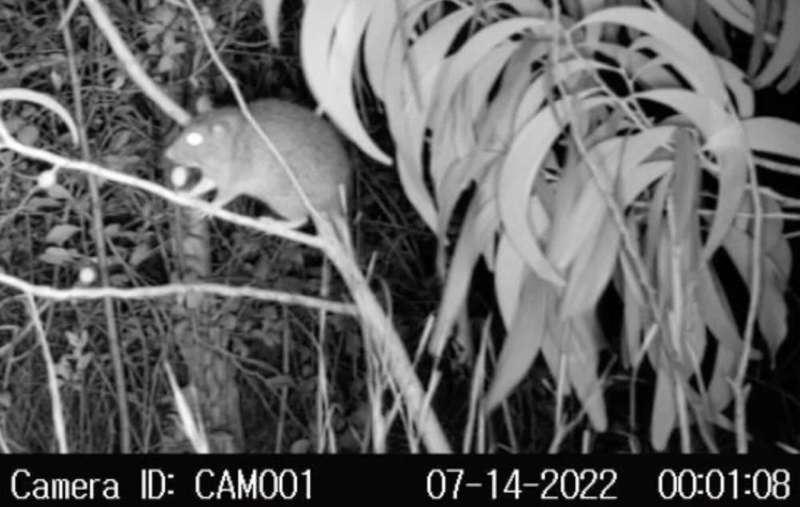This article has been reviewed according to Science X's editorial process and policies. Editors have highlighted the following attributes while ensuring the content's credibility:
fact-checked
trusted source
proofread
Invasive rodent research may help protect Hawaiian forests

O'ahu, Hawaii, is an island rife with lush nature, expansive ocean views and, increasingly, invasive rodents. House mice, black rats and Pacific rats all have contributed to ecological destruction in Oʻahu's forests, and forest managers are working to curb their activity.
Ph.D. candidate Sara Gabrielson, a researcher in professor Jeff Foster's lab in the Department of Biological Sciences, recently published an article describing her research on these invasive rodents' diets and how her findings may help protect the island from future environmental harm.
The study, "DNA metabarcoding reveals diet composition of invasive rats and mice in Hawaiian forests," published recently in the journal Biological Invasions, discusses her analysis of rodent feces, which allowed her to better understand the animals' diets.
Researchers used DNA metabarcoding, a technique that uses sequencing of a specific DNA marker to find multiple species from a mixed sample. The approach is particularly useful for species that are typically difficult to study because of their small size or nocturnal activity.
"DNA metabarcoding is expanding our ability to study what animals eat," Gabrielson said. "The fact that we can take a mouse turd and identify all the plants and animals that comprise that brown mush is truly astounding. It opens the door for scientists to answer many questions about predator-prey relationships we haven't been able to with other techniques."
Her research found that the majority of the rodents' diets consisted of invasive plants, which contributed to seed dispersal. The more the rodents defecated, the more they spread harmful non-native plant species across the island.
Though it was not the majority of their diet, rodents did consume native species harming the Oʻahu ecosystem, as some of those plants and invertebrates included threatened and endangered species of Hawaiian snails and plants.
The research is unique because it includes house mice, which are typically excluded from similar studies. According to Gabrielson, many researchers assume house mice are too small to contribute to seed dispersal, however, her research found that they defecate a high number of invasive seeds.
Gabrielson said her conclusions may help protect island environments from the detrimental impacts of invasive species spread.
"Better understanding rodent diets can help us stop the damage rodents cause and protect native ecosystems," Gabrielson said. "Protecting islands from the damage of invasive species is important to prevent native species extinctions, maintain ecosystem services for human inhabitants, and protect cultural resources."
More information: Sara M. E. Gabrielson et al, DNA metabarcoding reveals diet composition of invasive rats and mice in Hawaiian forests, Biological Invasions (2023). DOI: 10.1007/s10530-023-03159-4
Provided by Northern Arizona University


















